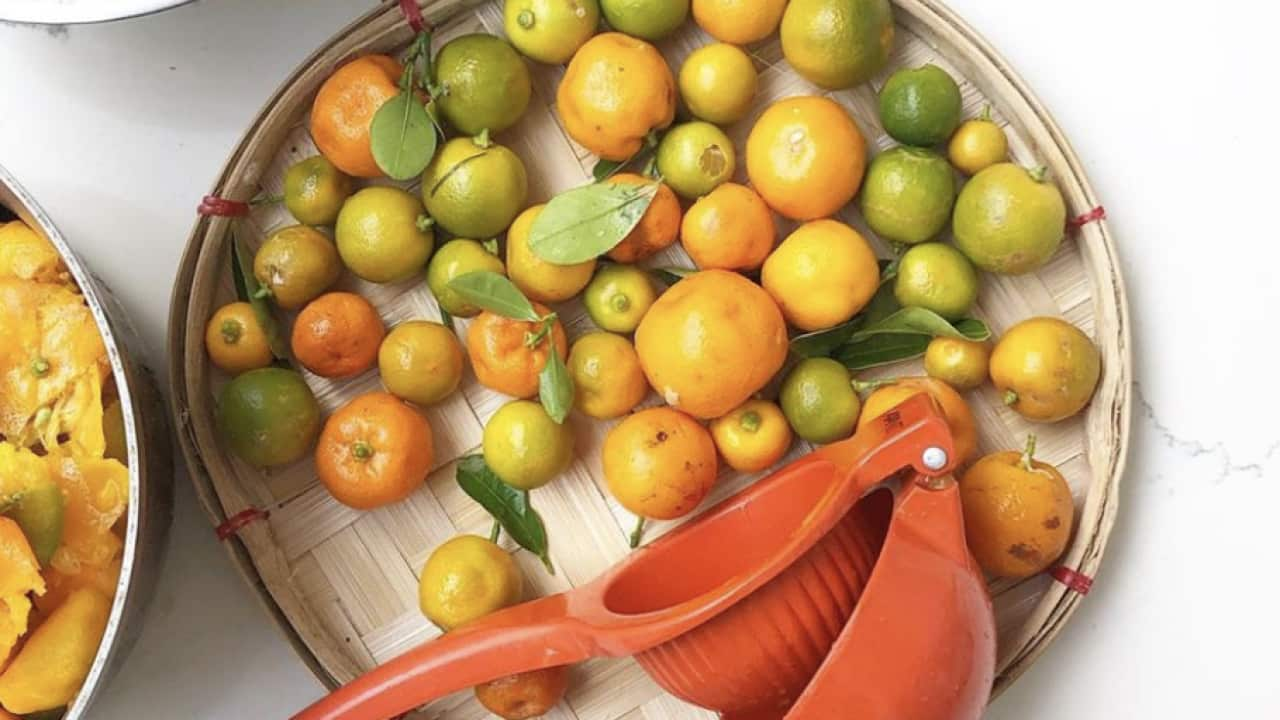If you were to look in the backyard of every Filipino household in Australia, wonders if you’d find dozens, if not hundreds, of calamansi trees.
She, herself, has a 35-year-old calamansi tree, that was planted by her father after the family moved to Melbourne from the Philippines. “My understanding is that, for him, it was this humble thing that connects us back home. It’s connecting us to our food, which is a big part of our identity, our heritage and our culture,” says the co-founder of , a group that promotes Filipino cuisine.
(also known as kalamansi and calamondin) is a small citrus fruit, with a bright orange flesh and a peel that goes from green to orange as it ripens. It tastes sour with a hint of sweetness, like a mix between a lime and a mandarin. It has a distinctive aroma – citrusy and floral. You’ll see it used in different Asian cuisines, but first and foremost in the Philippines, where it’s an essential ingredient.
Calamansi at home

Calamansi citrus tart
“It’s the most amazing citrus. When you go to any barbecue or seafood houses in the Philippines, it’s a staple. You use it to marinate, you use it to eat with seafood on the beach, with chicken and pork at barbecues,” says . “People have it in their backyards, but there are also farmers growing it for commercial use. You have calamansi juice, calamansi soda, calamansi dishwashing liquid.”
In Filipino cuisine, you’ll see the fruit used in dishes like (sour soup) and (Filipino-style ceviche), and sauces like .
Magnaye also uses the juice in curd for desserts, and turns the whole fruit into jam.
serves a calamansi cocktail, does a “kalamansi kooler” and used to offer oysters with calamansi. Earlier this year, restaurant Rice Paper Scissors and distiller launched a
It’s the most amazing citrus. When you go to any barbecue or seafood houses in the Philippines, it’s a staple.
Santos-Arguelles saw calamansi on the menu of a non-Filipino restaurant for the first time at the 2018 , during a dinner at . After the restaurant asked the public for produce from their backyards, she provided calamansi from her tree, which ended up in a marmalade to accompany pork knuckle.
She’d love for calamansi to follow a trajectory similar to . “We’re seeing it as an opportunity to share our migrant story and also to commercialise the calamansi tree,” she explains.
While it is possible to find calamansi juice and pulp online and from importers, the prices are high. And like with most things, fresh is best anyway. So it would make sense to here. “It’s easy to grow, all you need is good water and tender loving care. My contacts in the Philippines say it takes only about two years from planting to the tree producing fruit,” says Santos-Arguelles. “We have a lot of land in Australia, and lots of farmers. Talking about sustainability and local produce, why not consider growing calamansi in our own backyard, in regional Victoria, for example?”
“We have a lot of land in Australia, and lots of farmers. Talking about sustainability and local produce, why not consider growing calamansi in our own backyard, in regional Victoria, for example?”

Growing calamansi is easy – Fides Santos-Arguelles has a tree that's 35 years old. Source: The Entree.Pinays
Like Santos-Arguelles, Magnaye believes there’s a market for calamansi in Australia, from Filipino restaurants to cocktail bars to chefs interested in working with lesser-known ingredients.
We’re seeing it as an opportunity to share our migrant story and also to commercialise the calamansi tree.
“It could really take off,” he says.
And with Filipino cuisine becoming increasingly popular, it seems like there’s no better time than now. “If we try to bring Filipino food to the mainstream, can we do that through the calamansi story? I think we can, it’s so adaptable, just like us,” concludes Santos-Arguelles.
Filipino flavours

Feels like home: A Spanish-Filipino stew for special occasions









